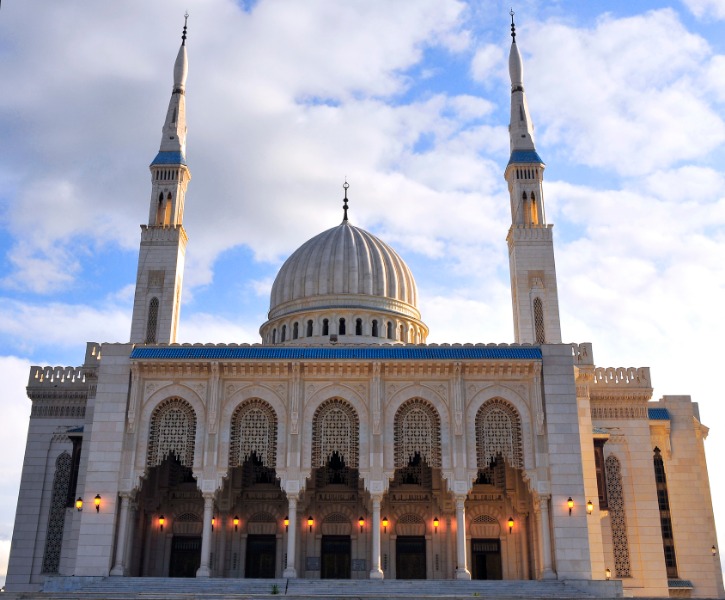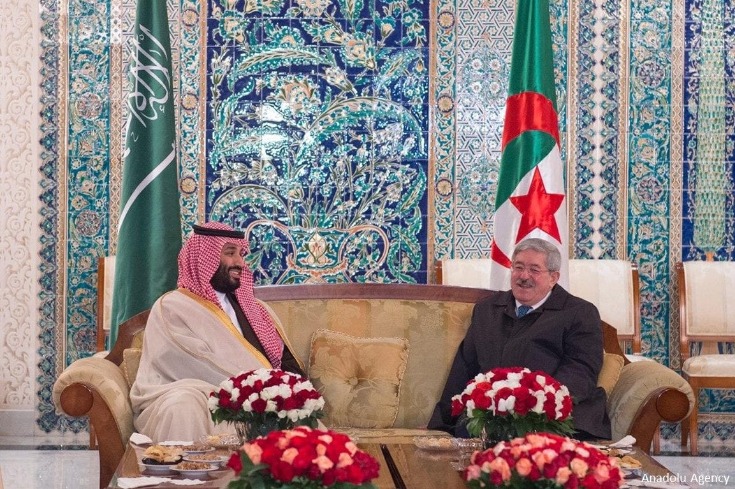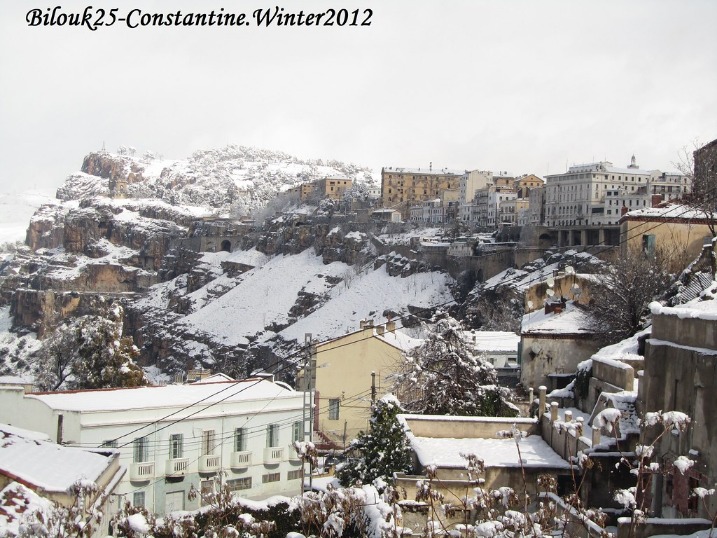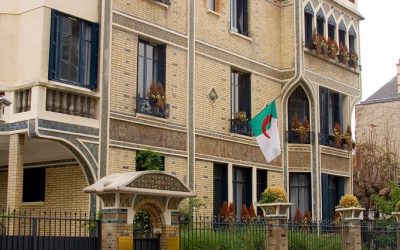Historical Background of Constantine
Constantine, a city rich in history and cultural significance, boasts a fascinating historical background that dates back centuries. Located in northeastern Algeria, Constantine has long been a vital center of trade, military strategy, and civilization in the Maghreb region. Its strategic position atop dramatic gorges and its role throughout various periods—from ancient Numidian times through Roman rule and onwards—have shaped its unique identity. The city’s history reflects a complex tapestry of influences, making it a remarkable site of historical interest in Algeria.
Ancient Origins and Early Settlements
Constantine, a city in northeastern Algeria, boasts a rich historical background rooted in ancient origins and early settlements. Its history dates back to the Numidian era, where it was initially inhabited by indigenous Berber tribes. The area was later influenced by the Phoenicians, who established trading posts along the coast and contributed to the development of early settlements in the region. During the Roman period, the city, then known as Cirta, became a prominent administrative and cultural center. Under Roman rule, it flourished as a hub of commerce, architecture, and learning, with notable remains such as aqueducts, theaters, and temples that highlight its significance. The strategic location of Constantine along vital trade routes contributed to its enduring importance throughout history, influencing the diverse cultures and civilizations that shaped its early development. The city’s ancient origins and continuous settlements reflect its long-standing role as a vital link in the historical and cultural tapestry of Algeria.
Roman Era and Founding of Cirta
The city of Constantine, located in northeastern Algeria, has a rich historical background that dates back to ancient times. During the Roman era, it was a significant administrative and military center known as Cirta. Originally founded by the Berbers, Cirta became prominent under Roman rule as a hub of commerce and culture, benefiting from its strategic position along important trade routes. The Romans fortified the city with impressive walls, bridges, and aqueducts, contributing to its development and influence throughout the region. The founding of Cirta is generally traced to the Phoenicians or Berbers before Roman conquest, but it was during the Roman period that the city truly flourished, establishing itself as a major urban center that would later evolve into the modern city of Constantine, renowned for its historical significance and architectural heritage.
Medieval Period and Islamic Influence
Constantine, a historically significant city in Algeria, has a rich background that reflects its diverse cultural and historical influences. During the Roman period, it was known as Cirta and served as an important administrative and military center, fostering early urban development and cultural exchange. Following the decline of the Roman Empire, the region experienced periods of Berber control and later incorporation into various Islamic caliphates, which introduced new religious, architectural, and social structures. The Medieval Period saw Constantine becoming a key hub in the Maghreb, thriving through trade routes and scholarly activities, especially during the Islamic Golden Age. Islamic influence profoundly shaped the city’s identity, evident in its distinctive architecture, mosques, and cultural practices that persist today, blending indigenous traditions with Islamic heritage to create a unique historical tapestry.
Colonial History Under French Rule
Constantine, a city in northeastern Algeria, boasts a rich historical background shaped by various periods of rule and influence. Its strategic location has made it a significant center throughout history, especially during colonial times under French rule. The colonial history of Constantine under French rule played a pivotal role in shaping the city’s development and modern identity.
During the French colonial period (1830-1962), Constantine experienced considerable transformation. French colonization introduced new administrative structures, economic activities, and urban planning initiatives that significantly altered the city’s landscape. The expansion of European-style buildings, roads, and infrastructure marked a major shift from its traditional Ottoman and Arab architecture.
- French conquest in 1837 marked the beginning of extensive colonization in Constantine, leading to the establishment of colonial governance and military presence.
- Economic exploitation focused on agriculture, mining, and trade, with infrastructure projects like railroads connecting Constantine to other parts of Algeria and France.
- Urban development under French rule saw the construction of public buildings, schools, and hospitals, often favoring European residents while marginalizing the indigenous population.
- Resistance movements and uprisings against French authority emerged, culminating in the broader Algerian fight for independence.
- The legacy of French rule significantly influenced Constantine’s cultural and architectural character, which can still be observed in its historic neighborhoods and landmarks today.
Geography and Climate of Constantine
Constantine, a historic city in Algeria, is renowned for its unique geography and diverse climate. Situated on steep, rugged hills and surrounded by deep gorges, the city boasts a dramatic landscape that has shaped its development over centuries. The climate in Constantine is typically Mediterranean, characterized by hot, dry summers and mild, rainy winters, contributing to the region’s rich natural beauty and agricultural productivity.
Geographical Location and Topographical Features
Constantine, located in northeastern Algeria, is a city renowned for its unique geographical and topographical features. Situated on the eastern edge of the country, it is perched atop a series of rocky hills and deep gorges, creating a dramatic and scenic landscape. The city is positioned along the winding banks of the Rhumel River, which has carved out deep valleys and rugged cliffs over millennia. Its elevated location provides stunning views of the surrounding valleys and mountain ranges, contributing to its strategic importance and distinctive charm. The geographical setting has greatly influenced the city’s development, architecture, and cultural heritage.

Climate and Weather Patterns
Constantine, a historic city in northeastern Algeria, is characterized by a diverse geography and distinctive climate patterns. Situated on a dramatic plateau overlooking the Rhumel River gorge, the city features rugged terrain with steep cliffs, deep valleys, and surrounding mountains that contribute to its unique landscape. The region’s topography influences local weather, creating variations in temperature and precipitation across different areas of the city.
The climate of Constantine is classified as Mediterranean, with hot, dry summers and mild, wet winters. Summers typically see temperatures soaring above 30°C (86°F), accompanied by low humidity and minimal rainfall. During the winter months, temperatures usually range between 8°C (46°F) and 15°C (59°F), with increased precipitation that sustains the region’s vegetation. Weather patterns are largely influenced by the Atlas Mountains to the south and east, which can lead to occasional rainfall and cooler conditions during transitional seasons. Overall, Constantine’s climate fosters a mix of arid and temperate weather, shaping the lifestyle and agricultural practices of the area.

Natural Landmarks and Surrounding Environment
Constantine, located in northeastern Algeria, is renowned for its unique geography and diverse climate. It is situated on the edge of the Roman Ruins and is characterized by rugged terrain, deep valleys, and dramatic gorges. The city lies atop a series of sandstone plateaus divided by steep, rocky ravines, creating a striking landscape that has shaped its historical and cultural development.
The climate of Constantine is classified as Mediterranean, with hot, dry summers and mild, wet winters. Summers often see temperatures soaring above 30°C, while winter temperatures typically range between 10°C and 15°C. The surrounding environment influences local weather patterns, with some regions experiencing more extreme temperature variations due to the mountainous terrain.
Several natural landmarks define the scenic beauty of Constantine and its environs. These include:
- The Rhumel River, which runs through the city and has carved out deep gorges and valleys.
- The Monument of Cirta, an ancient Roman archaeological site built on a hilltop overlooking the city.
- Mount Zerhoun, a prominent mountain that provides panoramic views of the surrounding landscape.
- The El-Kala National Park nearby, which features dense forests, diverse wildlife, and lush vegetation.
- The city’s famous suspension bridges and fortified sites that span across breathtaking escarpments and gorges.
The surrounding environment includes a mix of lush forests, rocky outcrops, and agricultural lands that contribute to the city’s natural beauty and ecological diversity. The combination of dramatic geological formations and favorable climate conditions makes Constantine a significant geographical and environmental landmark in Algeria.
Cultural Significance and Heritage
Constantine, a city rich in history and tradition, holds a profound cultural significance that reflects Algeria’s diverse heritage. As a center of ancient civilization and medieval learning, Constantine embodies a unique blend of historical influences, artistic expressions, and social customs that shape the identity of its people. Exploring this city offers insight into the enduring heritage that continues to influence modern Algerian culture and its preservation of centuries-old traditions.
Architectural Landmarks and Historical Sites
Constantine, Algeria, is a city rich in cultural significance and historical heritage that reflects its diverse and vibrant history. Its roots can be traced back to ancient times, with influences from Roman, Byzantine, and Islamic civilizations, making it a tapestry of cultural traditions and historical narratives. The city’s heritage is celebrated through various festivals, museums, and preserved sites that showcase its enduring legacy.
Architectural landmarks and historical sites in Constantine offer a glimpse into its illustrious past. The iconic suspension bridges, such as the Sidi M’Cid Bridge, are engineering marvels and symbolize the city’s resilience. The historic Casbah and old city quarters are filled with narrow streets, traditional houses, and mosques that narrate centuries of urban development. Notable sites like the Ahmed Bey Palace and the Museum of Cirta preserve artifacts and stories from different eras, highlighting the city’s importance as a cultural and historical hub in Algeria.
Local Traditions and Cultural Festivals
Constantine, a city rich in history and cultural vibrancy, holds a profound significance in Algeria’s cultural heritage. Its ancient ruins, such as the famous Roman bridges and archaeological sites, reflect a deep connection to the past, showcasing the city’s role as a historic crossroads of civilizations. These heritage sites are celebrated and preserved as symbols of identity and continuity for the local community. Additionally, Constantine is renowned for its unique blend of traditions, which are expressed through music, dance, and art, embodying the diverse cultural influences that have shaped the city over centuries.
Local traditions in Constantine are vividly alive, often celebrated through daily customs and community gatherings. The city’s residents take pride in their hospitality, traditional crafts, and culinary delights, all of which contribute to a distinct cultural identity. Cultural festivals play a vital role in preserving these traditions, with events such as the International Festival of Circuits and other local celebrations showcasing traditional music, dance, and performances. These festivals not only honor the city’s rich heritage but also foster a sense of unity and pride among residents and visitors alike, making Constantine a vibrant hub of Algerian cultural life.
Religious and Linguistic Diversity
Constantine, a historic city in Algeria, is a cultural mosaic reflecting the rich heritage and diversity of the region. Its architecture, monuments, and traditions showcase centuries of influences from Arab, Berber, Ottoman, and French cultures, making it a vital center of Algerian identity.
The city holds deep religious significance, with numerous mosques, churches, and religious sites that highlight the coexistence of Islamic, Christian, and other faiths over time. This religious diversity is an integral aspect of Constantine’s cultural fabric, fostering tolerance and mutual respect among its inhabitants.
Linguistically, Constantine is a hub of Arabic and Berber languages, which are predominantly spoken by the local population. French also remains prevalent due to historical ties, while emerging initiatives promote the preservation and revitalization of indigenous languages, reinforcing the city’s role as a custodian of Algeria’s diverse linguistic heritage.
Economy and Development
Economy and development are crucial themes in understanding the growth and modernization of regions like Constantine, Algeria. As a city with a rich history and strategic importance, Constantine’s economic activities reflect broader national trends, including industrial expansion, infrastructure improvements, and efforts to diversify beyond traditional sectors. Exploring these aspects provides insight into how Constantine contributes to Algeria’s overall development and economic resilience.
Key Economic Sectors and Industries
Algeria’s economy, particularly in Constantine, is characterized by a diverse range of key sectors that contribute significantly to its development. The city serves as a vital industrial hub, fostering industries such as manufacturing, chemicals, and textiles. Constantine is also known for its vibrant engineering and information technology sectors, supporting innovation and technological growth. Additionally, the oil and gas industry remains a cornerstone of Algeria’s economy, providing substantial revenues and influencing regional development. Agriculture, especially cultivation of cereals and olives, plays a supportive role in local livelihoods and the economy of Constantine. Overall, these sectors collectively drive economic growth, employment, and infrastructural development in the region, positioning Constantine as an essential economic center in Algeria.
Urban Development and Infrastructure Projects
Constantine, a historic city in northeastern Algeria, plays a vital role in the country’s economy and development. Its strategic location and rich cultural heritage attract tourism and promote economic activities related to commerce, manufacturing, and services. Urban development efforts aim to modernize infrastructure while preserving the city’s unique historical identity. Major infrastructure projects, including transportation networks, bridges, and public facilities, are ongoing to accommodate the growing population and enhance connectivity. These developments are essential for fostering sustainable growth, improving living standards, and integrating Constantine further into national and regional economic frameworks.
Tourism and Cultural Heritage Promotion
Algeria’s Constantine stands out as a vibrant hub for economic growth and cultural heritage, offering significant opportunities for sustainable development and tourism expansion. The city’s strategic location, historical significance, and modern infrastructure provide a solid foundation for fostering economic activities that can elevate local communities. Promoting tourism in Constantine is essential for showcasing its unique blend of ancient sites, Ottoman architecture, and modern urban landscapes, attracting visitors from around the world. Efforts to preserve and highlight its cultural landmarks not only bolster tourism but also enhance national pride and cultural exchange. Investing in tourism infrastructure, protecting archaeological sites, and implementing targeted marketing campaigns can stimulate economic development while celebrating Constantine’s rich history and diverse cultural identity.
Education and Social Aspects
Education and social aspects play a crucial role in shaping the development and identity of regions like Constantine, Algeria. As a historic city with a rich cultural heritage, Constantine’s educational institutions and social dynamics influence its progress and the wellbeing of its residents. Understanding these elements offers insight into how the community evolves and adapts within the broader Algerian context.
Educational Institutions and Academic Centers
Constantine, one of Algeria’s most historically significant cities, has a rich educational and social landscape that has shaped its development over centuries. The city is home to several prominent educational institutions and academic centers that contribute to its reputation as a hub for learning and cultural exchange. These institutions not only provide education but also serve as centers for social interaction, cultural preservation, and intellectual growth.
- The University of Constantine, also known as the University Abdelhamid Mehri, is the primary higher education institution in the city, offering a wide range of faculties including sciences, humanities, engineering, and law. It attracts students from across Algeria and neighboring countries, fostering a diverse academic community.
- In addition to universities, Constantine boasts several technical institutes and colleges that focus on vocational and technical training, helping students acquire skills relevant to the local economy and industries.
- Educational institutions in Constantine emphasize the integration of modern teaching methods while also preserving traditional Algerian culture and history, which is reflected in numerous cultural centers and libraries across the city.
- Besides formal education, social aspects such as student organizations, cultural events, and community programs play a vital role in fostering social cohesion and civic participation among youth and residents.
- These centers and institutions contribute significantly to Constantine’s reputation as an intellectual and cultural city, playing a crucial role in shaping its social fabric and educational advancement.
Societal Demographics and Population Trends
Constantine, a prominent city in Algeria, exemplifies significant education and social dynamics influenced by its demographic and population trends. The city’s educational infrastructure has expanded over recent decades, aiming to improve literacy rates and promote higher education among its residents. Societal aspects such as cultural heritage, social cohesion, and urban development shape the daily lives of inhabitants, fostering a unique communal identity. Population trends reveal a steady growth, driven by natural increase and migration patterns, which impact resource allocation, urban planning, and social services in the region.
- Demographic Growth: Constantine has experienced consistent population growth due to high birth rates and migration from rural areas seeking educational and economic opportunities.
- Educational Development: The city boasts several universities and research institutions, which contribute to high literacy and a skilled workforce, attracting students and professionals from across Algeria.
- Socioeconomic Changes: As the population expands, urban infrastructure and social amenities have been upgraded, leading to improved quality of life but also posing challenges like overcrowding and resource management.
- Cultural and Social Identity: Constantine maintains a rich cultural heritage with historical sites and traditions that influence social cohesion and community engagement among its diverse residents.
- Urbanization Trends: Rapid urban development in response to demographic pressures has transformed the cityscape, impacting social interactions and accessibility to education and other services.
Art, Music, and Literary Expressions
Algeria’s Constantine, a city renowned for its rich history and cultural diversity, plays a significant role in shaping the educational and social landscape of the region. The city boasts numerous institutions that promote learning and intellectual development, fostering a strong sense of community and identity among its residents. Additionally, Constantine serves as a vibrant hub for artistic, musical, and literary expressions, reflecting the city’s deep cultural roots and contemporary creativity.
- Education in Constantine is characterized by a blend of traditional and modern approaches, with universities and schools encouraging innovation and critical thinking.
- The social fabric of the city is enhanced by diverse communities that contribute to a dynamic cultural exchange and social cohesion.
- Artistic expressions in Constantine include visual arts, architecture, and public murals that narrate the city’s history and identity.
- Music remains a vital aspect of Constantine’s culture, with traditional genres like Chaabi and Raï coexisting alongside contemporary musical styles.
- Literary works from local authors often explore the themes of identity, history, and social change, enriching Algeria’s national literary heritage.
Modern Challenges and Future Outlook
Modern challenges and the future outlook for Algeria, particularly in the Constantine region, are shaped by a complex interplay of economic, social, and environmental factors. As the country navigates a rapidly changing global landscape, Constantine stands at the crossroads of preserving its rich history while embracing innovation and sustainable development. Addressing these challenges is essential for fostering resilient growth and ensuring a prosperous future for its residents and beyond.
Urbanization and Population Growth
Urbanization and population growth in Constantine, Algeria, present both opportunities and significant challenges for the city’s development. As one of the country’s historic centers, Constantine is experiencing rapid expansion, leading to increased demand for infrastructure, housing, and services.
- Overpopulation strains existing infrastructure, causing traffic congestion, water shortages, and waste management issues.
- Rapid urban growth can threaten cultural heritage sites if not managed sustainably.
- Economic opportunities arise from increased urbanization, attracting investments and fostering innovation.
- Environmental concerns such as pollution and reduced green spaces need to be addressed to enhance quality of life.
- Planning sustainable urban development is crucial for balancing growth with preservation of Constantine’s unique history and environment.
Looking ahead, the future of Constantine depends on effective urban planning that incorporates modern technology, sustainable practices, and community involvement. Emphasizing renewable energy, improving transportation networks, and protecting historical sites will be essential steps to ensure balanced growth. Enhancing education and healthcare infrastructure will also support the needs of a growing population. Overall, strategic planning and investment can help Constantine navigate the challenges of urbanization while maintaining its cultural identity and improving residents’ quality of life.
Environmental Concerns and Sustainability
Algeria’s Constantine region faces numerous modern challenges and opportunities related to environmental concerns and sustainability. Rapid urbanization and industrial growth have intensified pressure on natural resources, leading to issues such as water scarcity, pollution, and habitat degradation. Ensuring sustainable development requires balancing economic expansion with ecological preservation, emphasizing renewable energy adoption and waste management improvements. The future outlook for Constantine depends on implementing effective policies that promote environmental awareness, integrate sustainable practices into urban planning, and harness local resources responsibly. Emphasizing community engagement and technological innovation can help address these challenges and foster a resilient, environmentally conscious future for Constantine.
Development Projects and Strategic Plans
Constantine, one of Algeria’s most historic and vibrant cities, faces numerous modern challenges while striving toward a sustainable future. Urbanization pressures, infrastructural development needs, and environmental concerns require careful strategic planning to balance growth with preservation. The ongoing development projects focus on modernizing transportation networks, enhancing public services, and promoting eco-friendly initiatives to improve residents’ quality of life.
Looking ahead, Constantine’s future outlook involves innovative urban planning and technological integration to boost economic diversification and cultural preservation. Strategic plans emphasize investment in education, tourism, and renewable energy sectors, aiming to transform the city into a regional hub of commerce and culture. Development projects such as smart city initiatives and infrastructure upgrades are poised to support these goals, fostering resilient growth and positioning Constantine as a key player in Algeria’s national development agenda.





0 Comments